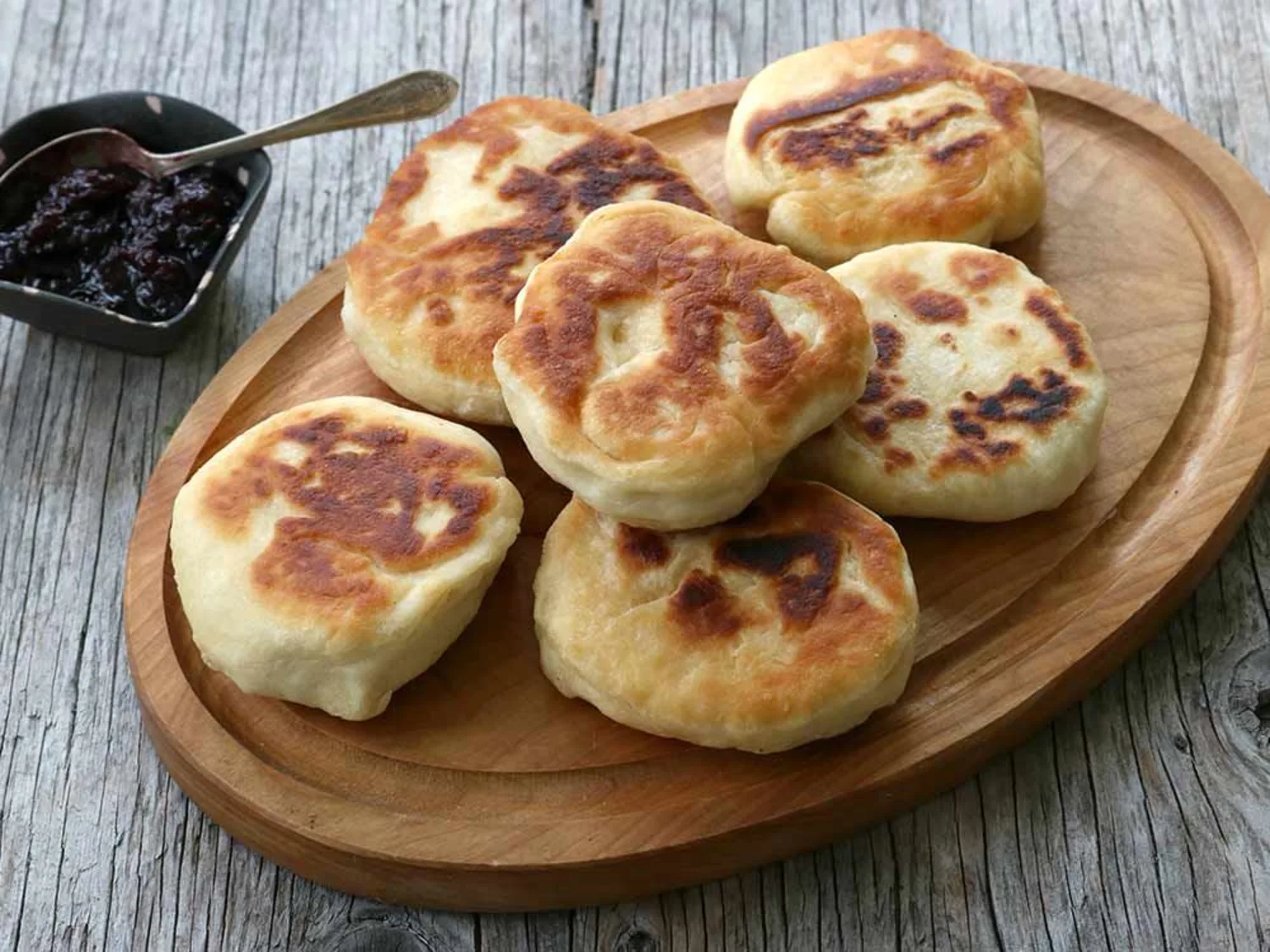
Bannock
Traditional Indigenous quick bread, grilled or fried.
Ingredients
- •Flour
- •Baking powder
- •Salt
- •Water
- •Oil
Instructions
Mix
Combine dry and wet ingredients
Shape
Form into flat rounds
Cook
Fry or grill until golden
Bannock is a traditional Indigenous bread that has been a staple food of First Nations peoples in Canada for generations. This simple yet versatile quick bread can be baked, fried, or even cooked on a stick over an open fire, resulting in a crispy exterior and soft, fluffy interior.
While bannock has ancient roots in Indigenous cultures, the modern version was influenced by Scottish settlers who brought similar bread-making techniques to Canada. The word "bannock" itself comes from the Gaelic word "bannach." Indigenous peoples adapted the recipe using local ingredients available to them, making it an important part of their food culture and survival during long hunting trips.
Making bannock is remarkably simple. The basic recipe combines flour, baking powder, salt, and water into a dough that can be quickly prepared. Some recipes add a small amount of oil or lard for richness. The dough is typically shaped into a flat round and can be cooked multiple ways - fried in a pan for a crispy exterior, baked in an oven until golden, or traditionally, wrapped around a stick and cooked over an open fire.
Modern variations of bannock might include additions like berries, raisins, or nuts for sweetness, or herbs and cheese for a savory twist. Some cooks incorporate whole wheat flour or cornmeal for added nutrition and texture. In some Indigenous communities, traditional ingredients like wild rice flour or saskatoon berries are used to connect the dish to its cultural roots.
In Canada today, bannock is enjoyed at Indigenous cultural events, pow wows, and increasingly in urban cafes and restaurants. It's often served warm and can be enjoyed plain, spread with butter or jam, or used as a base for Indigenous-inspired tacos or sandwiches. During outdoor activities like camping or hiking, bannock remains a popular choice due to its simple ingredients and cooking method.
From a nutritional perspective, basic bannock is relatively high in carbohydrates and calories, with a piece containing approximately 250-300 calories. It's a good source of energy, especially for outdoor activities. However, those with gluten sensitivities should note that traditional bannock contains wheat flour. The fried version is higher in fat content, so baking is a healthier alternative. Some modern recipes adapt the traditional version to accommodate dietary restrictions, using gluten-free flours or reducing fat content.
